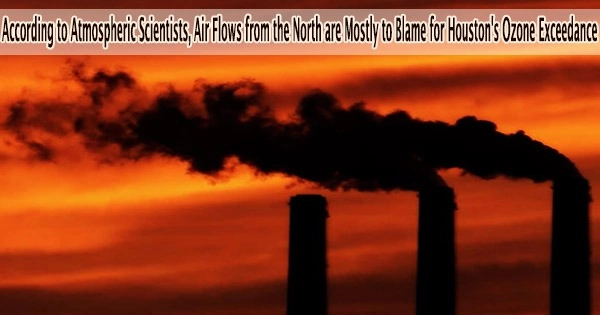Researchers in atmospheric science at the University of Houston have discovered that while local emissions contribute to the rise in ozone levels in Houston, the majority of the pollutants can be transported in from other parts of the nation, resulting in excessive ozone pollution. Their research provides information on methods to reduce ozone pollution in the area in the future.
The research team focused on two ozone episodes in September 2021 (Sept. 6–11 (2023) and Sept. 23–26 (2023)). Due to high temperatures, a lack of rain, and air circulation patterns that convey filthy air from the north, September often has the highest levels of ozone each year.
According to their analysis, the transported ozone from the country’s center and north was responsible for nearly 63% of the excess ozone during this time, while local photochemistry was responsible for about 37% of the heightened ozone production. The work was published in the journal Science of the Total Environment.
“Our study shows that Houston air pollution is a very complex phenomenon. There are both local and regional reasons for high ozone,” said Yuxuan Wang, corresponding author and associate professor of atmospheric chemistry at UH’s College of Natural Sciences and Mathematics. “Our findings also highlight that local emission control is critical.”
By investigating ozone pollution and examining the influence of local emissions, our study helps inform targeted strategies to enhance air quality and protect public health from ozone pollution in the Houston area.
Ehsan Soleimanian
According to the EPA, ozone causes the muscles in the airways to contract, which results in wheezing and shortness of breath. Ozone poisoning has been connected to asthma flare-ups and is probably one of the factors that contribute to the development of asthma.
According to Wang’s research, the majority of Houston’s ozone production hotspots are situated above the city’s commercial and industrial areas, including the Houston Ship Channel. Nitrogen oxides (NOx) and volatile organic compounds (VOCs), which are produced by industry and vehicle emissions, were highly concentrated in these areas. Nitrogen oxides combined with VOCs form ozone under sunlight.
The study highlights the significant role of long-lived oxygenated VOCs on ozone formation during pollution episodes. In contrast to shorter-lived VOCs that could be quickly eliminated from the environment through chemical processes, these VOCs have atmospheric lives of days to weeks. Examples include acetone, methanol and formaldehyde.
“These long-lived VOCs underscore the need for a heightened focus on reducing these emissions, especially at the Houston Ship Channel, since it is a hotspot of ozone formation in the area,” said Ehsan Soleimanian, first author of the study and an atmospheric science doctoral student.
The team relied on rich observational data from the TRACER-AQ field campaign, a scientific experiment that measured air quality in the Houston region in September 2021 conducted in partnership with the U.S. Department of Energy, NASA and TCEQ. This data was critical for Wang’s collaborators to validate their modeling.
They covered both global and local circulation patterns in their computer simulations of air movement. To replicate the chemistry of local contamination, they also used models of atmospheric chemistry.
“By investigating ozone pollution and examining the influence of local emissions, our study helps inform targeted strategies to enhance air quality and protect public health from ozone pollution in the Houston area,” Soleimanian said.
















